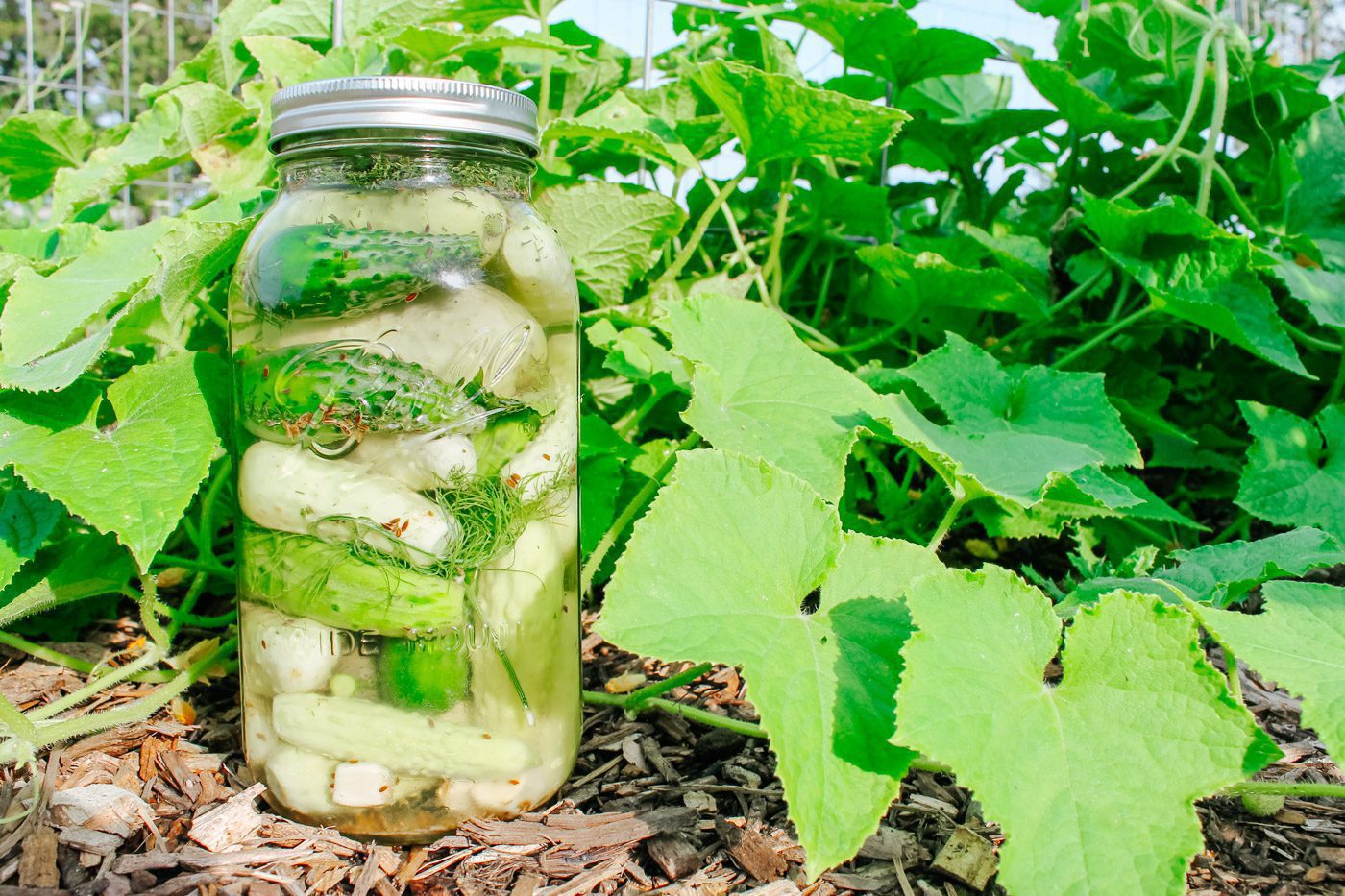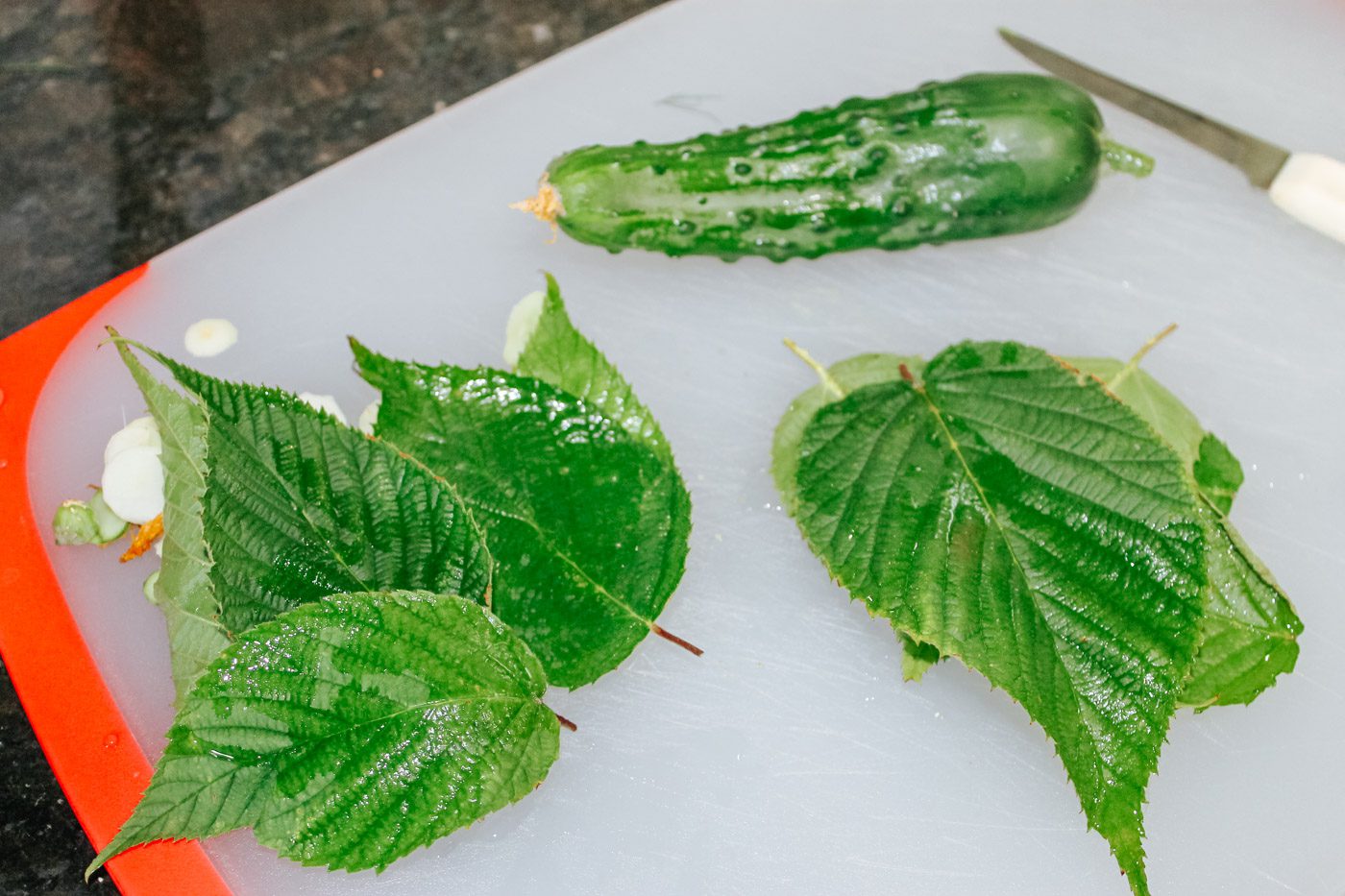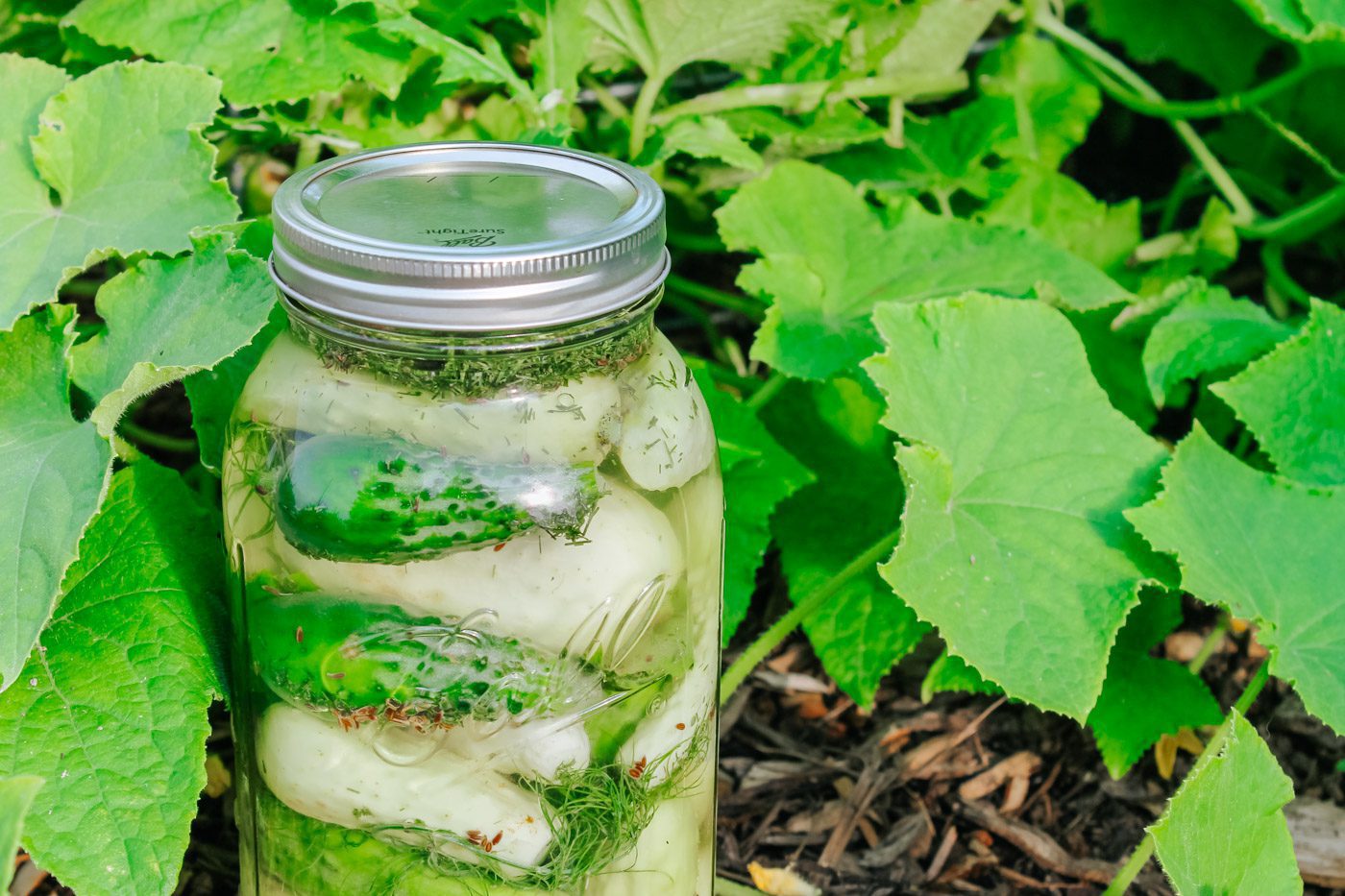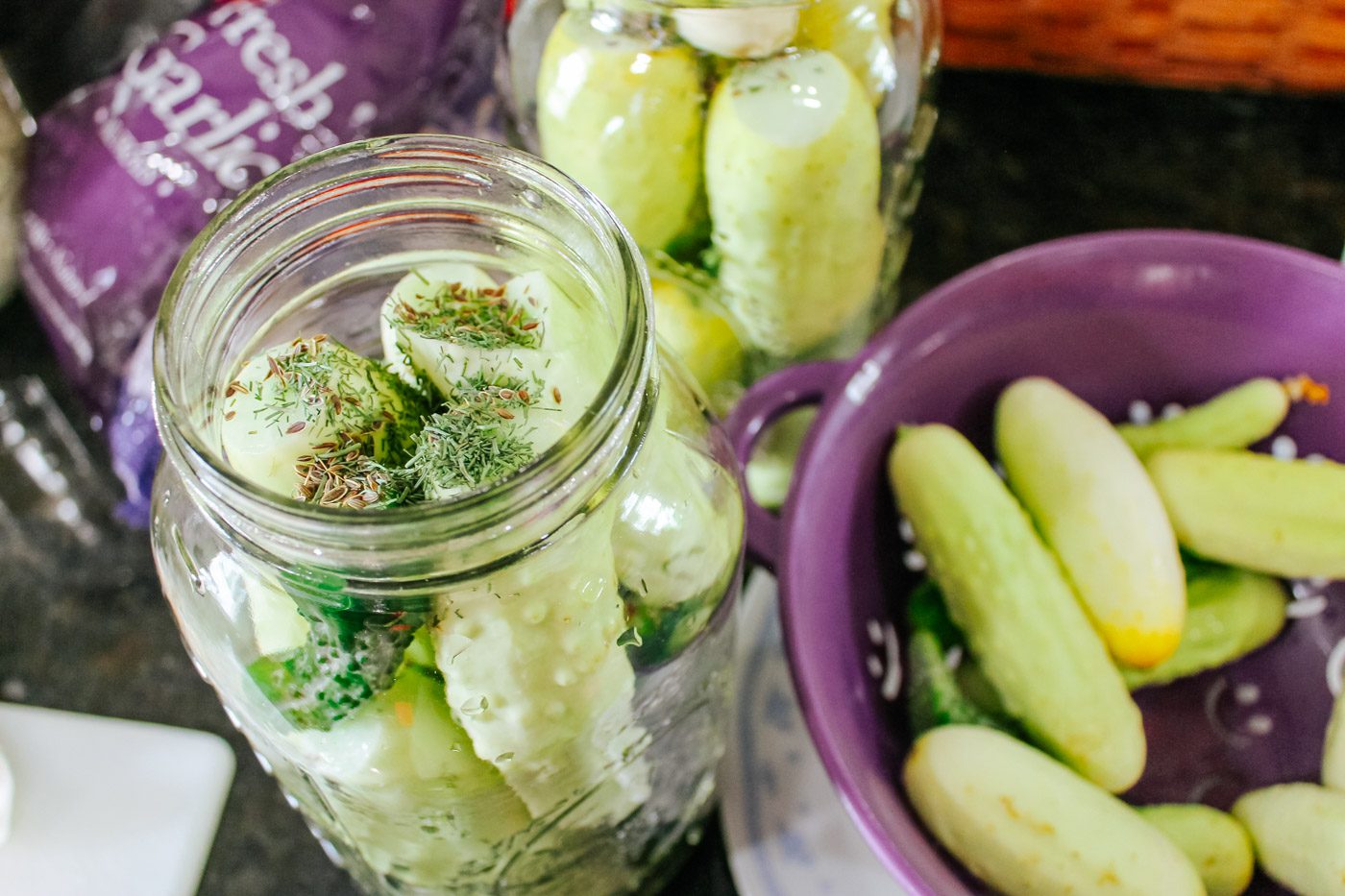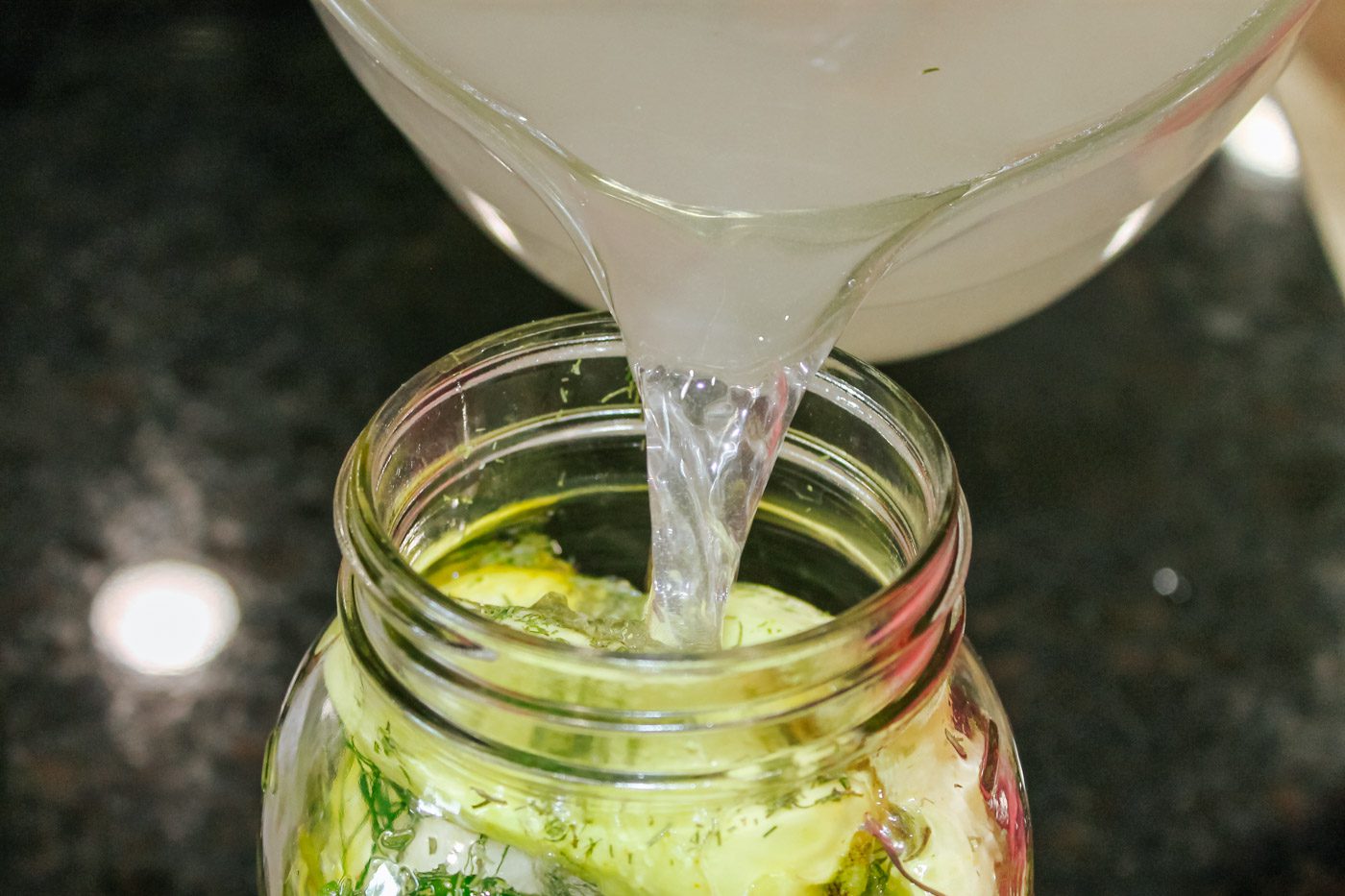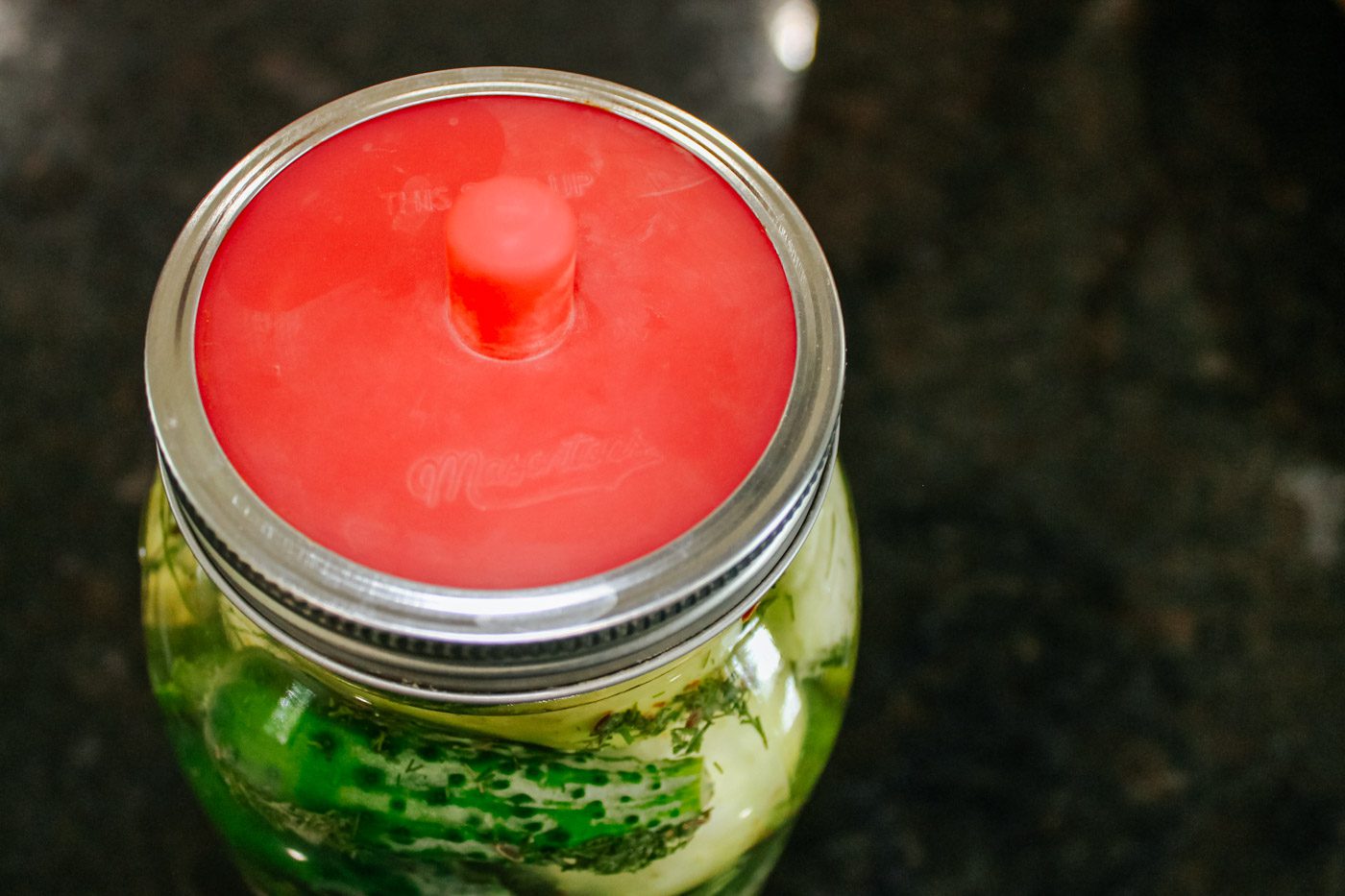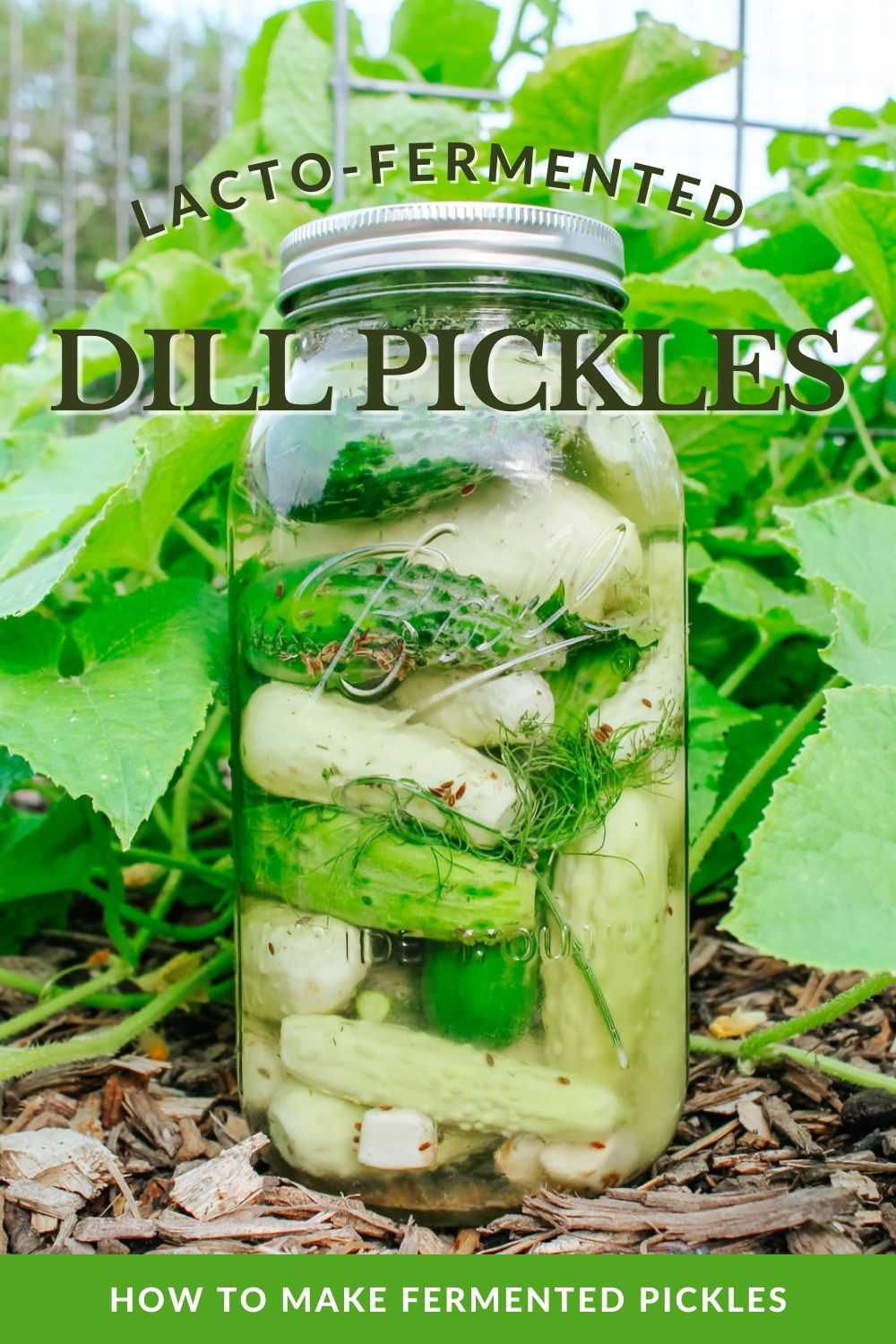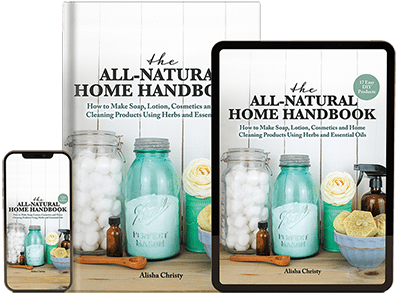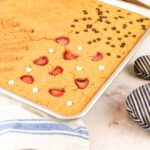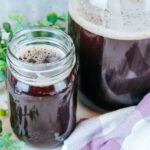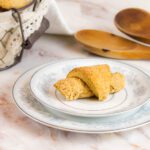Transform cucumbers into crunchy, slightly sour, probiotic-filled dill pickles by fermenting them. No special tools or knowledge required. Simply add the cucumbers into a salt water brine along with a little garlic and dill and within days you’ll have a tasty gut healthy snack. Homemade lacto-fermented pickles are super easy and quick to make.
Ever since I discovered the power of fermented foods, I want to ferment everything.
I started with fermented salsa. Then I tried dilly beans. After both proved to be a success and quite delicious, I delved into the fermenting world even deeper.
Sauerkraut. And lots of it.
Fermented carrots. Fermented garlic.
And I didn’t stop there. I made cultured sour cream, probiotic rich cream cheese, kefir drinks, yogurt and even a probiotic soda.
I suppose you can officially call me a fermentista.
This summer we have harvested an abundance of pickling cucumbers from our garden. Instead of canning them, we like to ferment them. Unlike canned pickles, they remain crunchy and are packed full of probiotics, enzymes and plenty of nutrition. Plus they are incredibly simple to make. All you need are a handful of pickling cucumbers, or even small regular green cukes which can grab from a garden or purchase at a local farmer’s market or roadside stand. You’ll need some dill, a few cloves of garlic, a couple of tannin-containing leaves, water and plenty of salt. Combine everything in a large jar and in just one week, you will have a half gallon full of delicious, gut healthy pickles. I prefer to serve them as a side dish with meals but they also make great snacks for kids, can be added to a potato salad recipe, sliced to add to a hamburger or chopped up for coleslaw.
What is lacto-fermentation?
Lacto-fermentation is the simple process of fermenting your vegetables to create a surplus of probiotics and flavor. To lacto-ferment a vegetable, such as kraut, first add salt to draw out the juices of the vegetable. By packing the kraut into a salt brine, you allow the lactic-acid to take over, causing the number of vitamins to sky rocket and the good bacteria to take over. In lamest terms, think of lacto-fermentation as controlled decay. Salt — your best friend, helps you to make sure the good guys (bacteria) win and the bad guys (yeast, mold and other bacteria) to skedaddle. When the kraut is finished fermenting, place it into the fridge and it will be preserved for many months.
Some vegetables, like cucumbers, cannot create their own brine. This is why you need to create a salt water brine for the cucumbers (soon to become pickles) to ferment in. During the process of osmosis, the water in the vegetable is replaced with the salt water brine, thus starting the lactic-acid fermentation process.
What is the Difference Between Pickling and Fermenting?
When you pickle a cucumber, the vegetable is placed into a sterilized jar, then a hot vinegar brine is poured over top. The jar is then sealed for a long shelf life. The sour flavor of pickled cucumbers comes from the vinegar and pickling spices. This type of pickle is not nearly as nutritious as fermented pickles.
Fermented cucumbers are created with a cool, saltwater brine and allowed to sit at room temperature for a designated amount of time to enhance nutrition and create a sour flavor. Once the pickles are done fermenting they must be stored in the fridge.
Why are my Fermented Pickles Mushy?
There are a variety of reasons your fermented pickles are not crisp. Here are a few tips to keep your pickles crunchy.
- Add the recommended amount of salt in the recipe below. Salt not only aids in the fermentation process, it also helps to preserve the crispy, crunch of the pickle.
- Remove the blossom end of the cucumber since it contains an enzyme that can soften the pickles.
- Always add a tannin-containing leaf to your jar of pickles. Some leaves that work well to keep your pickles crisp are grape leaves, horseradish leaves or oak leaves.
- Ferment your pickles in a cool environment. The warmer your house is, the faster the fermenting process will be which can sometimes end in unpredictable results. If you are making fermented pickles during the summer, set the jar out of sunlight, away from your kitchen oven and in a cool spot such as a pantry of basement. If you do not have a cool spot in your home, you may need to shorten the fermenting time.
Why are My Fermented Pickles Cloudy?
Within the first few days of fermentation the cucumbers will remain vibrant in color. As they ferment, they begin to dull and the water will turn cloudy. This is normal. The brine grows cloudy as the lactic acid starts to form.
How Long Will Fermented Pickles Last?
If fermented pickles are stored in a cold place such as the fridge, they can last up to 12 months. If at any point the pickles have an unusual taste, become discolored or grows large amounts of pink, black or blue mold, discard the jar of fermented pickles.
Homemade Fermented Pickle Recipe
This post contains affiliate links, which means I make a small commission at no extra cost to you. In any case, I only link to products we actually use on our homestead and that I believe can truly benefit to you. See my full disclosure here.
Makes: Half gallon
Ingredients to Make Fermented Pickles
About 2 quarts pickling cucumbers
6 garlic cloves
2 teaspoons dill seed
Handful of fresh dill or 2-3 teaspoons of dried dill weed (fresh dill works best)
2 1/2 tablespoons sea salt
2-3 tannin-containing leaves (grape leaf, blackberry leaf, horseradish, bay leaf, oak)
4 cups unchlorinated water
How to Make Fermented Pickles
In a measuring cup, add water and salt. Stir until the salt has dissolved completely. Set brine aside.
Trim off the blossom end of the cucumber as they contain an enzyme that can soften the pickles.
In a half gallon glass jar add a third of the garlic, dill seed, fresh dill and one tannin-containing leaf. Fill one-third of the way with cucumbers, being sure that they are packed into the jar tightly to prevent them from floating to the top once the water is added. Add a layer of garlic, dill and a tannin leaf. Follow with another one-third of the cucumbers. Layer the remaining garlic, dill and leaf. Fill the rest of the jar with the last of the cucumbers leaving about 2 inches of headspace at the top.
Pour over just enough brine to cover the the pickles. If your cucumbers are floating, you can add a fermenting weight to hold them below the brine. Cover with a lid or an airlock fermentation lid. Set aside, out of direct sunlight and allow to ferment for 5-7 days.
When the pickles have finished fermenting, place in the fridge. Refrigerated pickles can last up to one year.
Tips for Making Fermented Pickles
If the brine level drops during or after fermentation, create a brine using salt and water. Top off pickles until they are under the brine again.
Occasionally when you ferment pickles, white scum can appear on the top. It is usually harmless. Simply scrape the scum off and discard.
If you choose not to use a fermenting lid, you may need to burp the jar to prevent a build up of gas.
Lacto-Fermented Dill Pickles
Transform cucumbers into crunchy, slightly sour, probiotic-filled dill pickles by fermenting them. No special tools or knowledge required. Simply add the cucumbers into a salt water brine along with a little garlic and dill and within days you’ll have a tasty gut healthy snack. Homemade lacto-fermented pickles are super easy and quick to make.
Materials
- About 2 quarts pickling cucumbers
- 6 garlic cloves
- 2 teaspoons dill seed
- Handful of fresh dill or 2-3 teaspoons of dried dill weed (fresh dill works best)
- 2 1/2 tablespoons sea salt
- 2-3 tannin-containing leaves (grape leaf, blackberry leaf, horseradish, bay leaf, oak)
- 4 cups unchlorinated water
Instructions
- In a measuring cup, add water and salt. Stir until the salt has dissolved completely. Set brine aside.
- Trim off the blossom end of the cucumber as they contain an enzyme that can soften the pickles.
- In a half gallon glass jar add a third of the garlic, dill seed, fresh dill and one tannin-containing leaf. Fill one-third of the way with cucumbers, being sure that they are packed into the jar tightly to prevent them from floating to the top once the water is added. Add a layer of garlic, dill and a tannin leaf. Follow with another one-third of the cucumbers. Layer the remaining garlic, dill and leaf. Fill the rest of the jar with the last of the cucumbers leaving about 2 inches of headspace at the top.
- Pour over just enough brine to cover the the pickles. If your cucumbers are floating, you can add a fermenting weight to hold them below the brine. Cover with a lid or an airlock fermentation lid. Set aside, out of direct sunlight and allow to ferment for 5-7 days.
- When the pickles have finished fermenting, place in the fridge. Refrigerated pickles can last up to one year.

